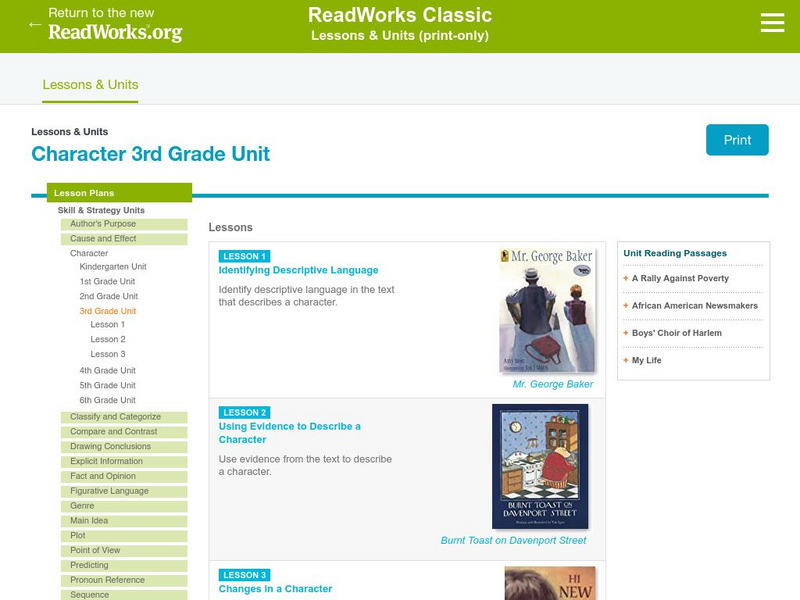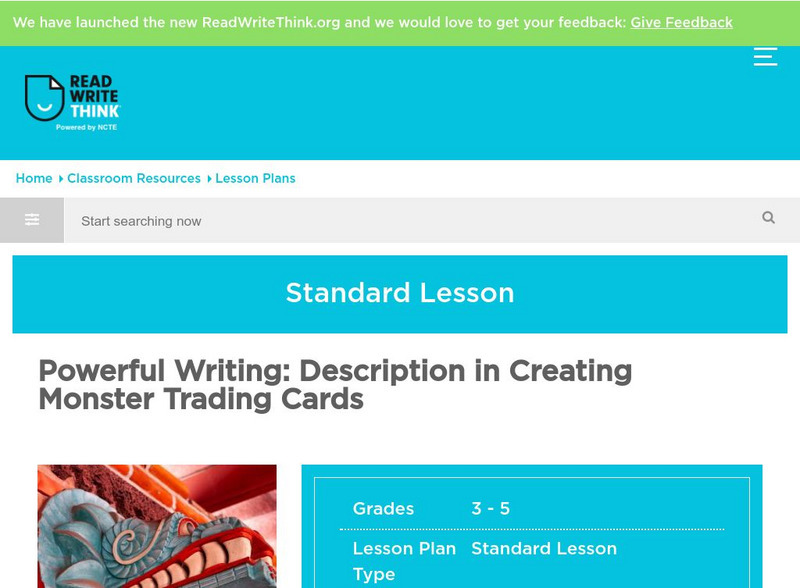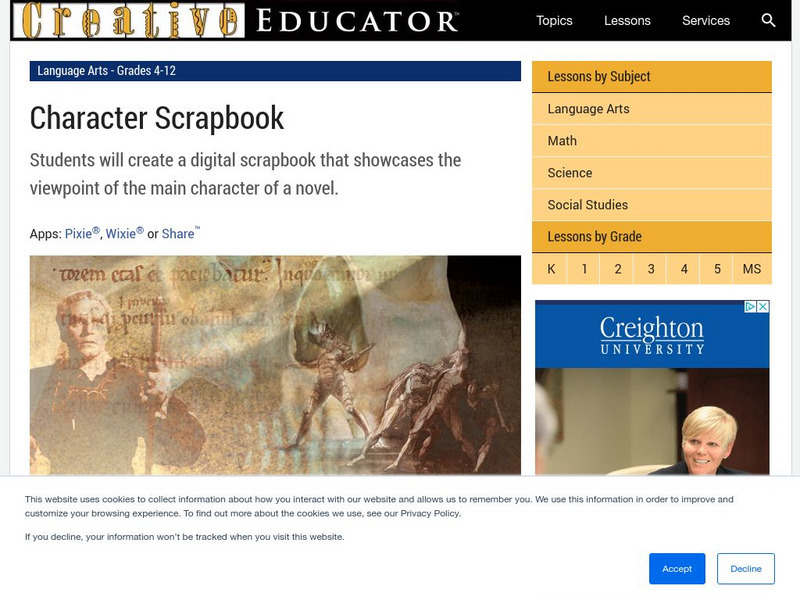Tom Richey
Slide Share: Discovering an Author's Point of View
A slide show with twenty-eight slides with information on how to determine an author's purpose to entertain, to inform, or to persuade his/her audience.
Tom Richey
Slide Share: Why Do Writers Write?
A slide show with nine slides explaining the author's purpose to persuade, inform, or entertain.
Scholastic
Scholastic: Investigating Nonfiction Part 3: Independent and Guided Reading
This article provides tips for using nonfiction with guided reading and independent reading. The following strategies are shared: ways to help kids select "just right" nonfiction books; lessons to use with nonfiction in guided reading...
Read Works
Read Works: Character 3rd Grade Unit
[Free Registration/Login Required] In this three-lesson unit, young scholars learn how to identify language within a text that describes a character, use evidence from a text to describe a character, and to use details from a text to...
Annenberg Foundation
Annenberg Learner: Characters
Learn about the different types of characters in Cinderella, and determine which traits belong to the hero and villain. Click on the "Character" button.
Annenberg Foundation
Annenberg Learner: Sequence
Listen to an explanation about the series of events in Cinderella. Then look at some pictures where the story's events are all mixed up and put them in the correct order.
Annenberg Foundation
Annenberg Learner: Literature: Exploring Point of View
Use these brief explanations to help you determine the narrator and point of view in any piece of literature. W.11-12.3a Narratives
University of Victoria (Canada)
The U Vic Writer's Guide: Literary Term: Narrator
Here's a definition of Narrator that includes distinctions "between the narrator, the author, and the implied author."
Other
Storytelling to Assess Speaking and Listening
An effective use of rubrics that encourages the student storyteller how to determine if his/her audience is listening. Learn about the different listening skill rubrics, storytelling rubrics and a self-assessment guide that asks the...
Texas Education Agency
Texas Gateway: Literary Nonfiction
[Accessible by TX Educators. Free Registration/Login Required] Identify the literary language and devices used in memoirs and personal narratives and compare their characteristics with those of an autobiography.
ReadWriteThink
Read Write Think: Powerful Writing Description in Creating Monster Trading Cards
Contains plans for two lessons that teach about descriptive writing by asking young scholars to create their own monster trading cards with vivid descriptions. In addition to objectives and standards, this instructional plan contains...
Other
Literacy Design Collaborative: Partner Retelling of Narrative Text
For this lesson, the teacher reads a story aloud and students work with a partner to retell the story using sentence starters. Includes downloadable poster.
New Zealand Ministry of Education
Nz Ministry of Education: What a Character
Students will explore characters created by authors and identify personality traits, and then apply these ideas to their own characters using language skills identified to convey these traits. Students will write a character sketch,...
Florida Center for Reading Research
Florida Center for Reading Research: Check a Trait
A lesson plan in which young scholars read a narrative text and complete a graphic organizer to describe the characters in the story. Materials are included. [PDF]
Alabama Learning Exchange
Alex: How to Write a Descriptive Essay
The students will learn to write a descriptive essay about a three-day space camp experience at the U.S. Space and Rocket Center. Students will then produce a multimedia slideshow about the experience.
Alabama Learning Exchange
Alex: Better Living Through Science
This lesson involves research on scientists whose accomplishments have impacted areas of nutrition, sanitation, or health care. Students will research an area of their choice, record information on a graphic organizer, and use the...
Alabama Learning Exchange
Alex: Powerful Book Reports
This lesson allows students to identify the critical components of a story while developing expertise in creating and presenting multimedia presentations.
Alabama Learning Exchange
Alex: Because of Winn Dixie: A New Point of View
This is a language arts lesson concentrating on point of view and narrative writing. Using the novel Because of Winn-Dixie, by Kate DiCamillo, students practice retelling part of a story from another point of view.
PBS
Pbs Learning Media: Literary Elements and Techniques: Imagery
Explore the literary technique of imagery to see how sensory language contributes to the meaning and feeling of a poem in this animated video [1:23] from WNET. Discussion questions below help students to further apply their understanding...
PBS
Pbs Learning Media: Literary Elements and Techniques: Symbolism
Explore how authors use symbolism to add a deeper level of meaning to their work in this short animated video [1:12] from WNET. Discussion questions below help students to further apply their understanding before analyzing a text.
Tech4Learning
Tech4 Learning: Creative Educator: Character Scrapbook
When we read novels, authors provide details about the main character through descriptive sentences, events that directly involve the character, and what other characters think and say about the main character. To show what you know...
Alabama Learning Exchange
Alex: Funny Sequence
After a discussion and work on sequence, students will apply this knowledge to sequencing comic strips through group work.
South Carolina Educational Television
Know It All: Non Fiction Text Features
Fifth graders will use non-fiction books to identify and explain how text features help them as individual readers.
Louisiana Department of Education
Louisiana Doe: Louisiana Believes: English Language Arts: Grade 5: The Birchbark House
Emphasizing the connections between English language arts and social studies, this unit teaches students how we learn about our past. Students explore various texts (literary and informational) to come to understand how Native Americans...
















